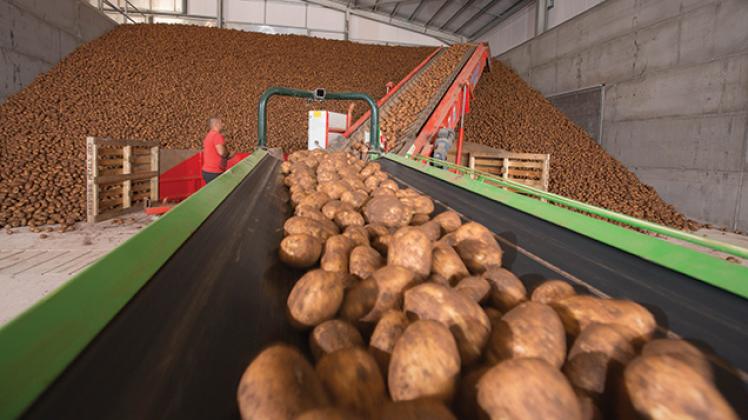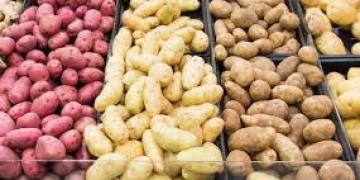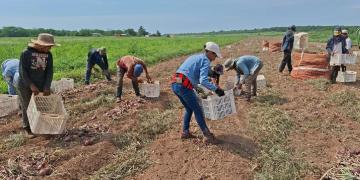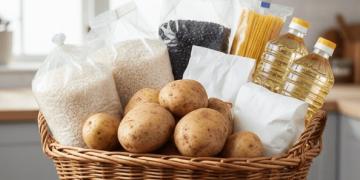Europa: Tips on potato storage while using less sprout suppressant
Reducing store temperature and treating potatoes early is the key to effective sprout suppression while reducing the use of a key pesticide.

CIPC (chlorpropham) is an essential tool to control sprouting and is applied to about 3.5m tonnes of potatoes stored each year by about 1,000 growers.
However for the 2015-16 season, the total label rates have been cut to 30g/t for potatoes destined for the fresh market and 50g/t for processing.
See also: Lower limit for potato sprout suppressant CIPC introduced
Therefore, there is a greater need to make best use of CIPC, says AHDB Potatoes technologist Adrian Briddon.
He adds that following best practice can also bring economic benefits, with some growers seeing real cost savings.
“For an average bulk store, some have successfully halved their use of CIPC.
“This has helped fund store modifications to improve CIPC distribution, giving payback within one to two years,” he says.
Timing
Mr Briddon believes that timing is the most important factor in getting good control.
How CIPC treatment works
CIPC acts by preventing plant cell division, which is required for sprout growth.
Treatment of potato stores involves, in most cases, application of CIPC as a hot fog which is introduced into the building under pressure using specialist thermal fogging equipment.
Best practice requires use of the store ventilation system to help to distribute this fog evenly throughout the crop to optimise the suppressant’s activity and to minimise residues.
“CIPC must be applied before dormancy breaks in potatoes. Applying after this will require more of the active to prevent sprouting.
The length of dormancy depends on variety. For those with a short dormancy, treatment will be about 14-21 days after store fill.
Some have a longer dormancy and it can be nearer a month before the first application, but he still advises going early and not waiting for the “eyes open” stage.
“There is still a tendency to over cure crops, because of the fear that CIPC will interfere with the curing process, but that is not the case,” he says.
“Once the crop is dry, you need to think about getting the NAAC [National Association of Agricultural Contractors] contractor in to apply CIPC,” he says.
Temperature
Once you have applied CIPC, aim to bring the temperature down as low as you can. “This will also help reduce sprouting risk, thereby cutting the need for future applications.”
The ideal storage temperature depends on variety, ranging from 6-10C. “This is quite a large range and is one area growers can look at to reduce their CIPC use,” he says.
For potatoes destined for crisping, some varieties will store at 6C without affecting processing quality while others have to be at 9-10C.
He highlights Lady Clare as a crisping example, which will store happily at 7C.
“Therefore, opting for variety that can be stored at a lower temperature can help.”
But he adds that growers need to keep an eye on processing quality, to ensure it is not being adversely affected by a lower temperature. “Also ensure it is acceptable with your buyer.”
Removal of soil is also crucial, as it can prevent the active being taken up by potatoes.
Air-flow
Prior to CIPC application, growers are advised to recirculate store air for a minimum of six hours to ensure temperatures are even.
Good circulation is also critical during fogging.
“In bulk stores, you need to need to recirculate CIPC through the bulk pile to make most use of the active and ensure there are no pockets receiving little or no active.”
With box stores, it is more difficult to get effective circulation, especially in overhead throw stores, as there is no means to deliver the active to the target.
The most effective way to improve recirculation is to simply install a divider curtain across the store with a large cutout filled with the block of boxes.
“This helps ensure all the circulating air is going through the boxes rather than short-circuiting around the heap of boxes in the store, he says.
Then use low speed fans to move the fog around and get better CIPC distribution.
Finally, Mr Briddon says don’t forget to continue monitoring stores. “You are looking for a nice smell with a dry crop and an even temperature and get CIPC on early.”
For more on using CIPC, including best practice and how to reduce the risk of excessive residues, see the industry-led CIPC Stewardship Group’s website.
Fuente: https://www.fwi.co.uk/arable/tips-potato-storage-using-less-sprout-suppressant




